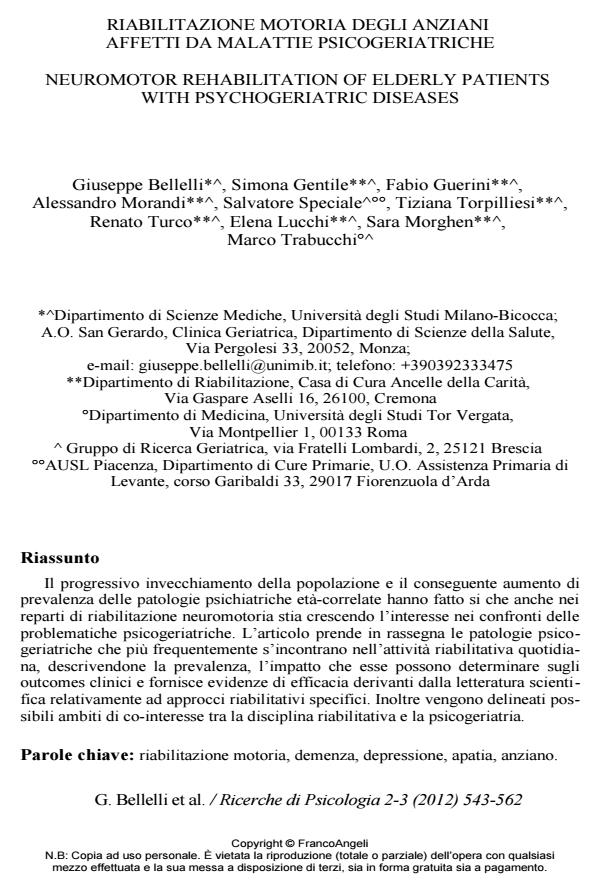Neuromotor rehabilitation of elderly patients with psychogeriatric diseases
Journal title RICERCHE DI PSICOLOGIA
Author/s Giuseppe Bellelli, Simona Gentile, Fabio Guerini, Alessandro Morandi, Salvatore Speciale, Tiziana Torpilliesi, Renato Turco, Elena Lucchi, Sara Morghen, Marco Trabucchi
Publishing Year 2013 Issue 2012/2-3
Language Italian Pages 20 P. 543-562 File size 219 KB
DOI 10.3280/RIP2012-002025
DOI is like a bar code for intellectual property: to have more infomation
click here
Below, you can see the article first page
If you want to buy this article in PDF format, you can do it, following the instructions to buy download credits

FrancoAngeli is member of Publishers International Linking Association, Inc (PILA), a not-for-profit association which run the CrossRef service enabling links to and from online scholarly content.
The progressive aging of population and the consequent increase in the prevalence of age-related mental disorders have led to a growing interest about the psychogeriatric diseases in the rehabilitation settings. This article reviews the diseases most frequently encountered in the everyday rehabilitation practice, describing the prevalence and the impact they can determine on clinical outcomes. Furthermore, it provides evidence of efficacy derived from the scientific literature with regard to specific rehabilitation approaches. Finally, it outlines possible areas of co-interest between the rehabilitative and the psychogeriatric disciplines. .
Keywords: Motor rehabilitation, dementia, depression, apathy, elderly
Giuseppe Bellelli, Simona Gentile, Fabio Guerini, Alessandro Morandi, Salvatore Speciale, Tiziana Torpilliesi, Renato Turco, Elena Lucchi, Sara Morghen, Marco Trabucchi, Riabilitazione motoria degli anziani affetti da malattie psicogeriatriche in "RICERCHE DI PSICOLOGIA " 2-3/2012, pp 543-562, DOI: 10.3280/RIP2012-002025